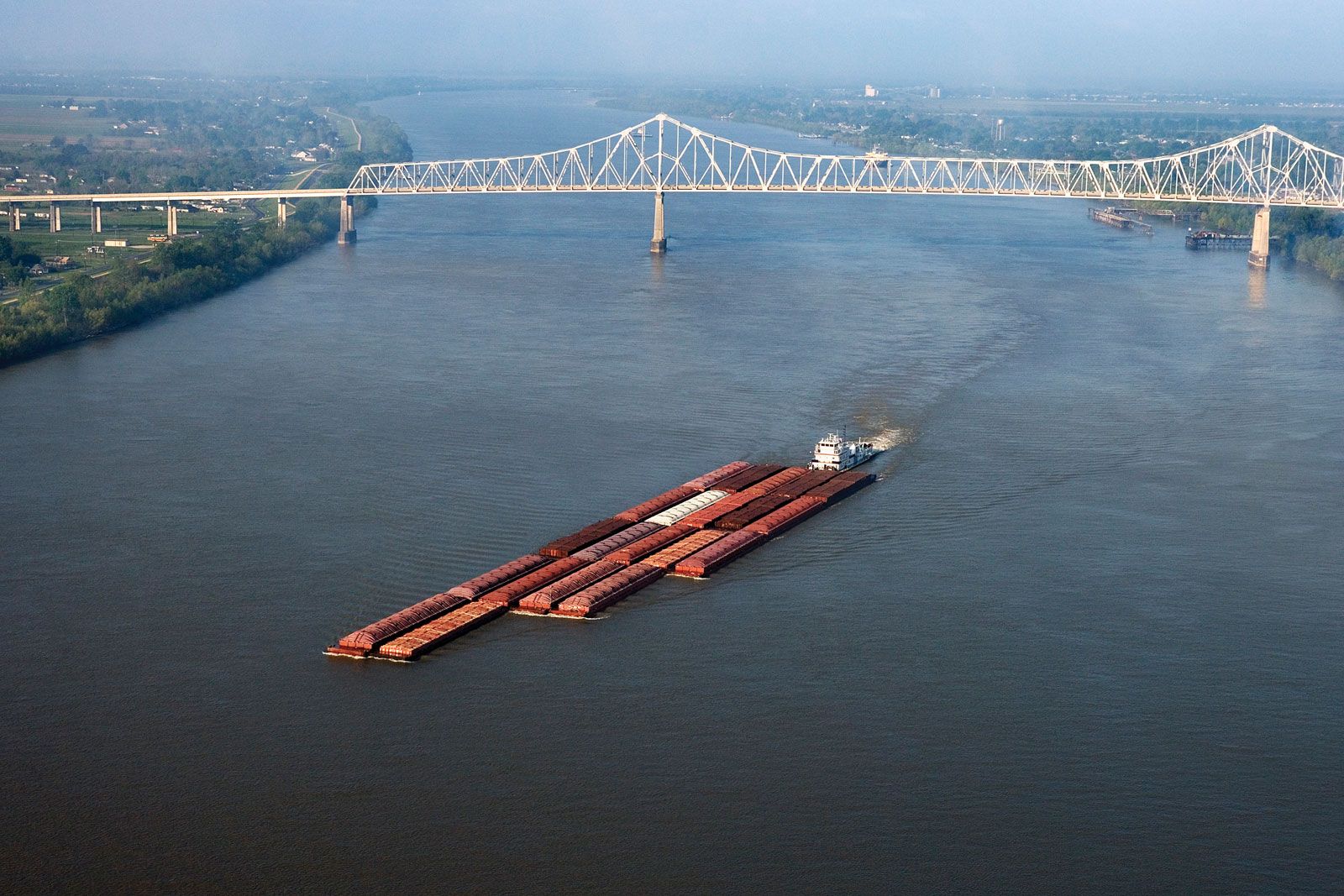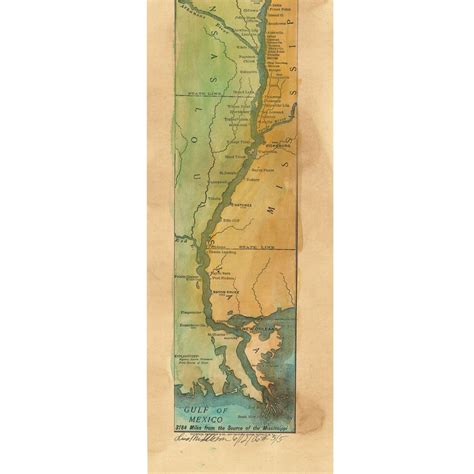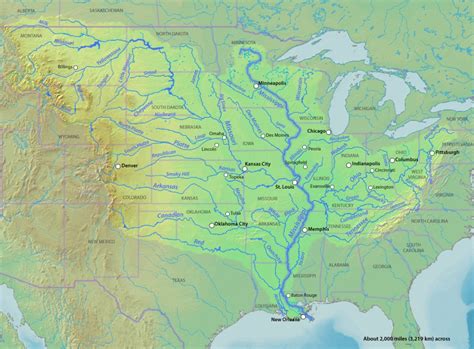The Mississippi River is one of the most iconic and historically significant waterways in the United States, stretching over 2,300 miles from its source in Lake Itasca, Minnesota, to the Gulf of Mexico. The river flows through or along the borders of 10 states, including Minnesota, Wisconsin, Iowa, Illinois, Missouri, Kentucky, Tennessee, Arkansas, Mississippi, and Louisiana. A map of the Mississippi River reveals its winding path, numerous tributaries, and the diverse landscapes it traverses, from the rolling hills of the north to the vast delta regions of the south.
Geography and Course of the Mississippi River

The Mississippi River’s course can be divided into three main sections: the Upper Mississippi, the Middle Mississippi, and the Lower Mississippi. The Upper Mississippi, which extends from the river’s source to the confluence with the Ohio River, is characterized by a narrower channel and faster currents. The Middle Mississippi, spanning from the Ohio River to the confluence with the Arkansas River, widens and slows, with numerous oxbow lakes and wetlands. The Lower Mississippi, from the Arkansas River to the Gulf of Mexico, is marked by a vast, fertile delta and a complex network of distributaries, bayous, and marshes.
Major Tributaries and Cities
Several major tributaries contribute to the Mississippi River’s volume and significance, including the Missouri, Illinois, Ohio, Tennessee, and Arkansas rivers. Key cities along the Mississippi River include Minneapolis, Minnesota; St. Louis, Missouri; Memphis, Tennessee; Vicksburg, Mississippi; and New Orleans, Louisiana. These cities have historically played crucial roles in trade, commerce, and culture, with the river serving as a primary transportation route and source of livelihood for millions of people.
| Section of the River | Length (miles) | Notable Features |
|---|---|---|
| Upper Mississippi | 670 | Lake Itasca, Minneapolis, St. Paul |
| Middle Mississippi | 850 | St. Louis, Missouri River confluence, Ohio River confluence |
| Lower Mississippi | 750 | Cairo, Illinois, Memphis, Tennessee, New Orleans, Gulf of Mexico |

Key Points
- The Mississippi River stretches approximately 2,320 miles from Lake Itasca to the Gulf of Mexico.
- It flows through or along the borders of 10 states, showcasing diverse landscapes and ecosystems.
- The river is divided into the Upper, Middle, and Lower Mississippi sections, each with unique geographical characteristics.
- Major tributaries include the Missouri, Illinois, Ohio, Tennessee, and Arkansas rivers, significantly contributing to the river's volume and ecological importance.
- Cities like Minneapolis, St. Louis, Memphis, Vicksburg, and New Orleans have historical and economic significance due to their locations along the river.
Economic and Cultural Significance

The Mississippi River has played a pivotal role in the economic and cultural development of the United States. It has served as a primary route for trade and commerce, with goods such as grains, coal, and manufactured products being transported along its length. The river has also inspired countless works of literature, music, and art, symbolizing both the beauty and the challenges of American life. From Mark Twain’s “The Adventures of Huckleberry Finn” to the blues music that originated in the Delta region, the Mississippi River’s influence on American culture is profound and enduring.
Environmental and Conservation Efforts
Despite its importance, the Mississippi River faces numerous environmental challenges, including pollution, habitat destruction, and the impacts of climate change. Efforts to restore and protect the river’s ecosystems are underway, focusing on improving water quality, preserving wetlands, and promoting sustainable land use practices. The Mississippi River Basin Healthy Watersheds Initiative, for example, aims to improve water quality, reduce hypoxia in the Gulf of Mexico, and enhance biodiversity within the basin.
As the Mississippi River continues to flow through the heart of America, its management and conservation require a balanced approach that considers both human needs and environmental sustainability. By understanding the river's geography, economic significance, and cultural importance, as well as the challenges it faces, we can work towards ensuring the long-term health and vitality of this iconic American waterway.
What is the total length of the Mississippi River?
+The Mississippi River is approximately 2,320 miles long, from its source in Lake Itasca, Minnesota, to the Gulf of Mexico.
Which states does the Mississippi River flow through or along?
+The Mississippi River flows through or along the borders of 10 states: Minnesota, Wisconsin, Iowa, Illinois, Missouri, Kentucky, Tennessee, Arkansas, Mississippi, and Louisiana.
What are some of the major tributaries of the Mississippi River?
+Major tributaries of the Mississippi River include the Missouri, Illinois, Ohio, Tennessee, and Arkansas rivers.
Why is the Mississippi River important economically and culturally?
+The Mississippi River is crucial for trade and commerce, serving as a transportation route for goods. Culturally, it has inspired literature, music, and art, symbolizing American life and history.
What environmental challenges does the Mississippi River face?
+The Mississippi River faces challenges such as pollution, habitat destruction, and the impacts of climate change, which necessitate conservation efforts to protect its ecosystems and ensure its long-term health.
The Mississippi River’s map tells a story of geological history, human settlement, and the ongoing struggle between nature and human activity. As we continue to navigate the complexities of managing this vital resource, understanding its geography, significance, and the challenges it faces is essential for a sustainable future.



